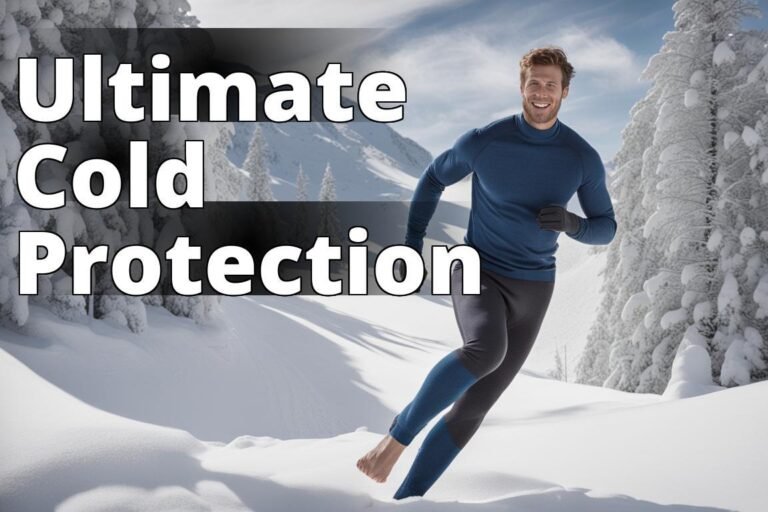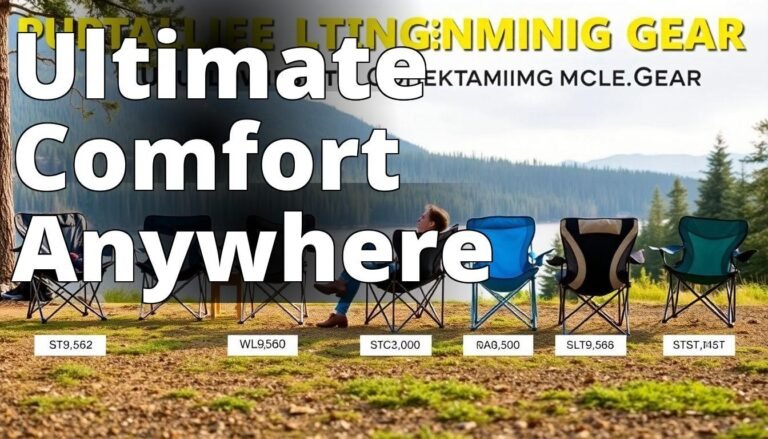Selecting Perfect Hiking Shoes: Our Trail-Tested Tips

Ever found yourself in the wild only to realize your footwear is better suited for a leisurely stroll in the mall than a rugged hike? You’re not alone. We’ve all been there and had our laugh at the sight of underprepared hikers tiptoeing up rocky trails in flip-flops.
Choosing the right hiking shoes can mean the difference between a minor ankle-twisting saga and an awesome superhero-like journey where no stream or slope can stop you. In this guide, we unravel the mystery behind how to choose the right hiking shoes, what are the hiking shoe features to consider, and how to pick the best hiking shoe for trails. Let your feet thank you as we traverse this roadmap to a comfortable and injury-free hiking experience, led by seasoned experts like Alison Watta and Cris Hazzard.
Key Takeaways
- Understanding your hiking habits is step one in selecting the perfect hiking shoe.
- Terrain types and trail conditions considerably impact shoe selection.
- The weight of your backpack and the length of your hike are essential considerations.
- Detailed knowledge about hiking shoe features can enhance your comfort and performance.
- Trying on shoes with the possibility of foot-swelling in mind could save you from blister city.
- Seasoned hikers’ tips and insights about top-rated brands could guide your selection process.
- The right hiking shoes should make you feel like you are armoured against the wild and not like you’re hauling lead.
Understanding the Importance of Proper Hiking Footwear
Ever gone for a walk in the park wearing flip-flops, then headed towards the rocky off-path terrain? If yes, you’d understand the difference a right pair of shoes can make. This isn’t an exaggeration, but a lesson learned in the school of hard (rock) knocks. The hiking shoe fit guide isn’t just a manual, but a key to unlock the doors into the majestic kingdom of Mother Nature, with an assurance of comfort and safety.
Let’s introduce you to a world where feet are treated as royalty, wrapped not in silk, but in tough, durable hiking footwear that’s meant to withstand the dance on rocks, leap over streams, and jog through confusing roots. As defined by our friend and expert, Alison Watta from Exploration Solo, the right boots can be your guardian angels on steep descents, keeping slips and slides at bay.
“Boots can be saviors when unexpected streams appear out of nowhere. Who likes wet socks anyway?” – Alison Watta
But finding your foot-armor isn’t as simple as picking up the most expensive or stylish pair from a retail store. There’s more to it than meets the eye! Kim Kelley from REI Store 63 weighs in with some advice, “When choosing hiking shoes, don’t forget to consider the terrain, the weather, and the distance you’ll be covering. A 1-mile walk in the park isn’t the same as a 10-mile hike up the hill, right?”
- Invest time in researching and reading a waterproof hiking shoes review; they could be crucial on wet and damp trails.
- Understand the kind of support and comfort you need. If your motto is ‘light and fast’, you might want to lean towards a lightweight shoe.
- Try before you buy. Wearing the shoes before the adventure can give you a better idea about how they’ll hold up on an actual trail.
So next time you plan your hiking escapades, don’t underestimate the power of a good pair of hiking shoes. Pick the right ones and let them turn you into a trail-blazing dynamo!
How to Choose the Right Hiking Shoes
Undertaking the great outdoors is like going on a wild date with Mother Nature herself. Much like any date, your shoes matter and can be the difference between bliss and blister. But don’t stress, we are here to give you the low-down on how to choose hiking shoes that will make your adventures an affair to remember. So let’s dive deep into the terrain, tread, and overall toughness your shoes need to be your trustworthy trail partner.
Deciphering Terrain and Trail Conditions
It all starts with you and your trails. Are you a lofty peak conqueror or a tranquil trail meanderer? Your trekking style is the compass guiding your choice of footwear. For rocky terrains and challenging trails, hiking boots might be your best bet. If you’re sauntering on well-maintained paths or sandy beaches, trail runners should do the trick. And for those who like to mix it up, hybrid hiking shoes are the Goldilocks option: not too heavy, not too light, but just right.
Weight and Backpack Considerations
Just like a pair of good jeans, your hiking shoes need to fit you and your style. The weight of your gear plays a critical role in your comfort and performance on the trail. Are you a minimalist packer or the ‘kitchen sink’ sort of hiker? Alison Watta suggests aiming for heavier shoes if you’re hauling a significant load, while Cris Hazzard recommends lightness and comfort for those sparsely packed single-day missions. So, pull out your scales and let the weighing game begin.
Evaluating Shoe Features for Comfort and Performance
Now, onto the features that elevate a pair of ordinary shoes to become your dream durable hiking footwear. Think of these as the ‘Avengers’ of shoe features, each one serving a critical mission. You’ve got your thick soles playing Hulk protecting your feet from sharp rocks, pronounced tread patterns (the Spider-man of the team) helping you stick to the trails, and waterproofing, our very own Thor, fighting off the elements. So, make sure your pair shouts “I’m ready for anything“, before they accompany you to the wild.
| Trail Runners | Hiking Boots | Hybrid Shoes | |
|---|---|---|---|
| Preferred Terrain | Smooth Trails, Roads | Rugged Trails, Mountains | Mixed, Varied Surfaces |
| Backpack Weight Compatiblity | Lightweight | Heavyweight | Moderate Weight |
| Key Features | Breathability, Speed | Maximum Protection, Durability | Good Protection, Versatility |
Remember, your trails are an exciting puzzle and your hiking shoes the ultimate puzzle-solving gadget. So equip yourself with the best hiking shoe for trails and let your feet lead the adventure!
Breaking Down Popular Hiking Shoe Types

Ah, the hiking shoe universe! It’s as diverse as the hikers who conquer trails with each step. There’s a suitor for everyone, with some styles evolving lightyears beyond their original forms, while others hold true to their roots. Let’s take a leisurely walk through the bustling shoe market, from the sturdy traditional boots to the agile trail runners. And yes, we’re even going to talk about those airy gatecrashers—hiking sandals!
- Traditional Boots: These are your old faithfuls. Reliable, unfaltering, and built for the hike. These ankle-hugging protectors have come far from being just leather encasements and now boast of modern, lightweight designs without compromising on safety or comfort. These babies are a solid choice when you’re out hunting for the best hiking shoe for trails.
- Trail Runners: Next up, we have the mavericks of hiking footwear. Trail Runners are ditching the heavy-duty looks for a lean and mean design. Why, you ask? To keep you light on your feet and swift on the trails. These shoes might need a waterproof hiking shoes review though, as some lack that water-resistant magic.
- Hiking Shoes: Meet boot’s cool younger sibling. Hiking shoes, with the heart of a boot and the soul of a runner, are here for those who crave middle ground. They’re lighter, more flexible, and give your ankles a breather
- Hiking Sandals: Finally, the wild card of hiking footwear—hiking sandals. Non-traditional, open, and perfect for a day when lacing up feels like a task. But beware, they’re not for everyone or every terrain.
| Type | Best For | Weight | Protection |
|---|---|---|---|
| Traditional Boots | Rocky terrains & long treks | Medium-Heavy | High |
| Trail Runners | Light treks & trail running | Light | Medium |
| Hiking Shoes | Moderate treks | Medium-Light | Medium-High |
| Hiking Sandals | Light walks & water crossings | Light | Low |
So, now you’re probably gazing at your wardrobe with new meaning. Remember, the perfect pair is a blend of function, fit, and personal preference. So take your time, consider everything from comfort to climate, and let your feet lead you to the best hiking shoe for your adventures. With the right fit, your hiking shoes will feel less like a piece of gear and more like an extension of you, turning every trail into a walk in the park. Now, that’s what we call a happy ending!
Insightful Tips from Seasoned Hikers

Embrace the wisdom of veterans who’ve trudged thousands of miles across every type of terrain you can imagine. Their insights can light up your path to finding the right footwear for every hiking adventure you dream up. Strap in, let’s share the love for the great outdoors as we delve into the intricacies of picking the perfect hiking gear.
Makes and Models: Top-Rated Hiking Shoe Brands
Gleaning insights from our experienced hikers, a few names stand tall among the myriad of top-rated hiking shoe brands. For the demanding rough terrain explorers, brands like Merrell and Columbia offer durable and solidly built models. More casual hikers might find companions in lighter models from Salomon and New Balance. Remember, the right choice largely depends on your specific needs and comfort.
The Debate: Thick vs. Thin Soles and Their Impact
“To go thick or thin,” presents quite the conundrum when it comes to hiking shoe features to consider. Thick soles are like plush rugs for your feet. They offer substantial comfort but demand caution when dealing with challenging terrain. Conversely, thin soles make you nimbler, enhancing your feel of the ground beneath, albeit at a sacrifice of cushioning comfort. Deciding between the two depends on your personal comfort preferences and the type of terrain you’re tackling.
The Hiking Shoe Fit Guide: Ensuring a Perfect Match for Your Feet
Here’s a nugget of wisdom from our friend Kelley over at REI – getting the right fit is paramount, and it’s not just about squeezing your foot into the shoe. You’re on the quest for a comfortable match, a hiking shoe that doesn’t restrict movement, but is snug enough that you don’t risk blisters or grueling discomfort over longer treks. This delicate play between comfort and protection is your durable hiking footwear guide to a delightful hiking experience.
Conclusion
In the words of the great philosophical minds of the 21st century, aka us, we’ve come a long way together on this journey to uncover the mystery of how to choose the right hiking shoes. We’ve delved into terrains and treadmills, sprinted across the valley of brand variants, and scaled the mountain of feature analysis, all in service of your happy hiking endeavors.
The question of choosing the best hiking shoe for trails can now be answered eloquently by you, dear reader. You have the power to choose between traditional boots, the spritely trail runners, or the best of both realms – hiking shoes. From the comfort-seeking warriors who take pleasure in admiring every bug and blade of grass, to the rugged, camera-toting conquerors collecting miles not for the gram, but for the thrill, know that there’s a perfect fit for everyone.
Remember, the right hiking footwear is more than just a trendy accessory – it’s a tip for selecting hiking shoes that protect and serve those precious feet of yours. As you brave the wild, remember to wear your shoes as a badge of honor, adding grace to every stride and pride to every peak scaled. Now tie those laces, take that step forth, and let the rhythm of the trail guide you to heights unexplored, literally and figuratively.
FAQ
How do I choose the right hiking shoes?
When selecting the perfect hiking shoes, you have to consider several critical factors. First, think about the terrain and trail conditions you’ll be facing. Are you likely to encounter muddy trails, rocky terrain, or perhaps sandy paths? Your answer to this will determine whether you need trail runners, hiking boots, or a hybrid shoe. Other important factors to consider include the weight of your backpack, the features of the shoe including its durability, waterproofness, and comfort, and the fit of the shoe itself.
Why is having the right hiking footwear so important?
Having proper hiking footwear can significantly impact your hiking experience. Your hiking shoes need to provide adequate support, cushioning, and protection from rugged terrains and unexpected weather conditions. The right shoe will enhance your stability, prevent injuries, and ensure overall comfort during your hikes, allowing you to enjoy your adventures without worries about your feet.
How do different terrains and trail conditions affect my choice of hiking shoes?
Different terrains require different types of shoes. For example, if you’re planning a hike on a rugged or rocky trail, you might want to opt for high-cut boots that offer more ankle support. On the other hand, if you’re going on a light trek on a well-maintained trail, trail running shoes might suffice. Weather conditions should also factor into your decision, as wetter trails may require waterproofing features on your hiking shoes. Understanding your hiking habits and trail conditions will help you choose the best shoe for your needs.
What are some trustworthy hiking shoe brands?
There are several top-rated hiking shoe brands renowned for their quality, durability, and comfort. These include brands like Merrell, Salomon, Columbia, and Keen. However, the “best” brand may vary depending on personal preferences, specific shoe models, and individual wearer’s needs.
What’s the debate surrounding thick vs. thin soles?
The thickness of your shoe’s sole can significantly impact your hiking comfort and the shoe’s overall performance. Thick, cushioned soles offer comfort and good shock absorption but may lack precision on rocky or uneven trails. On the other hand, thin soles provide better ground feel and precision but offer lesser cushioning and protection. Therefore, choosing between the two should be based on the kind of trails you often tackle and your personal comfort preferences.
How do I ensure a perfect fit for my hiking shoes?
Ensuring the right fit begins with understanding your foot shape and size. Remember to try on your potential hiking shoes at the end of the day when your feet are at their largest due to natural swelling. Ideally, there should be a finger’s width of space from your longest toe to the shoe end. The shoe should hold your foot securely without causing any discomfort. Lastly, keep in mind that different brands may have different size charts, so be sure to measure your foot size in each particular brand before purchase.









